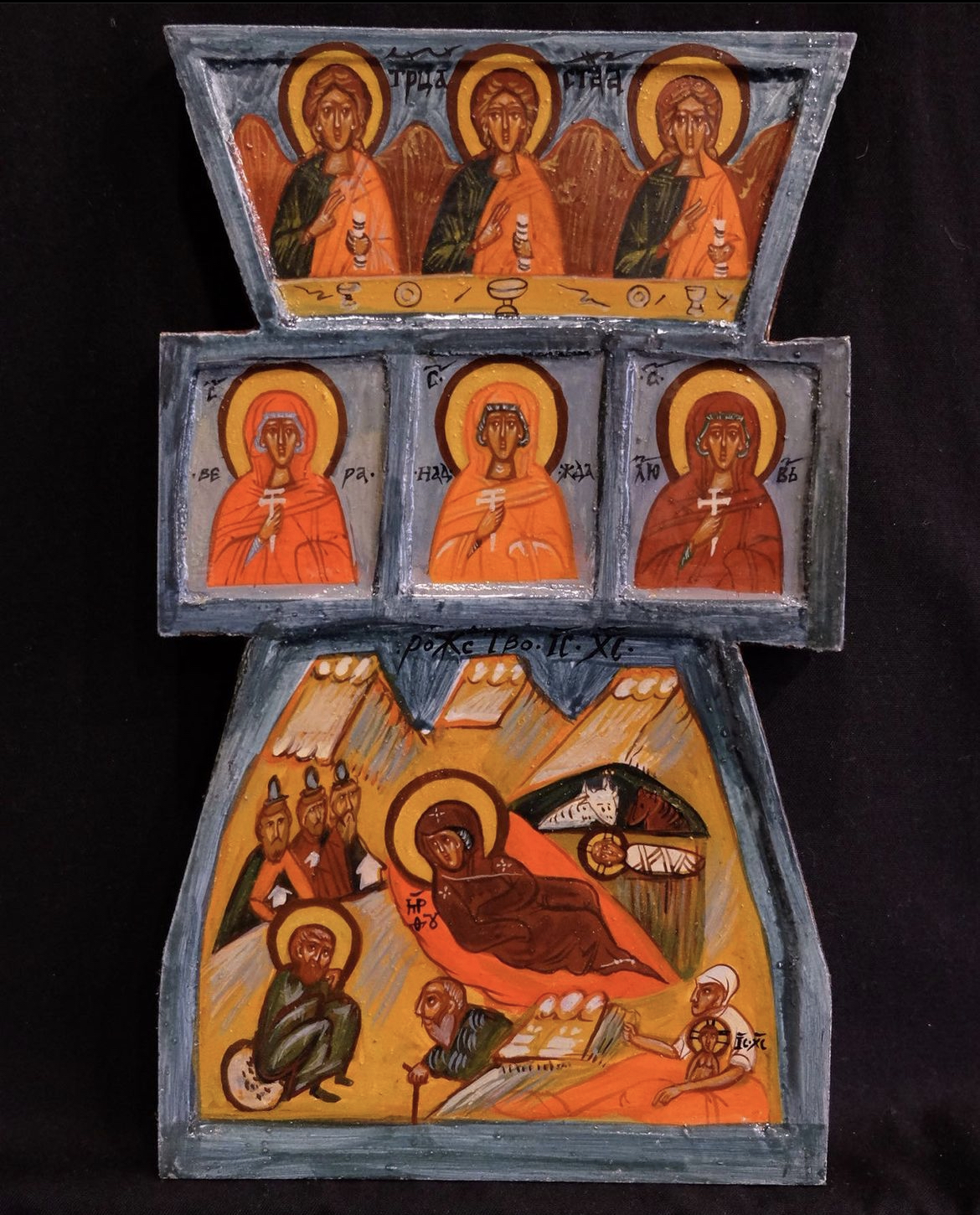Semyon Motolyanets works in various genres: he paints, creates sculptures, graphics, video and performances, and also works with non-artistic materials, such as chair seats from chairs thrown in the trash. Semyon is the leader of the oldest St. Petersburg underground band Parazit, the creator of the group “MYLO”. His name is well known not only to the domestic public, but also in certain circles of the foreign art community. He is one of the best-selling, according to Forbes, russian artists. His works are in the Tretyakov Gallery and the Russian Museum. We talked about his collaboration with the gallery, his collaboration with Zielinski & Rozen, promoting himself through social media, his path as a painter, and other interesting parallel projects.

Interview: Maya Lungul
Are you involved in promoting your works?
Yes, through Instagram (Instagram is a project of Meta Platforms Inc., whose activities are banned in Russia), if it can be called promotion in my case. But if there are requests, I send people to the gallery’s website, where they can familiarize themselves with the confirmed price. For example, this canvas costs 1,140,000 rubles. And people say, “I want to buy it”. Many people are interested in the works after visiting the Zielinski & Rozen boutique. They have my painting hanging right in the store. They often send me pictures from there. “Zielinski & Rozen” bought from me not only the work, but also the rights for a year to reprint the image.
Which gallery represents you, Marina Gisich? Was the collaboration with “Zielinski & Rozen” handled by the gallery?
Of course, this project, like all the others, is handled by the gallery. I only work on my Instagram (Instagram is a project of Meta Platforms Inc., whose activities are banned in Russia) and my website.
Are there any requests for purchases from your personal Instagram (Instagram is a project of Meta Platforms Inc., the activities of which are banned in Russia)?

Yes. I just throw pictures there. Often people turn to this social network after visiting Marina Gisich’s gallery, asking me, “Do you have one of these?” I say, “Sure” – and send a link to a page in the gallery that says how much it costs. It’s actually hard to say to someone who came through Instagram, “You know, guys, the work is for sale, but it’s worth 1,000,000.” And they say to me: “Why is it so expensive?” By the way, all the canvases from the last show at Marina Gisich Gallery are sold out.
I saw that all the installations were sold, too.
Some of them. And all the little things are sold too.
How do you split the income with the gallery?
50/50 on the sales. If a work costs 100,000, I get 50,000.
Giving 50% to the gallery is a lot.
They do a gigantic and very important job. For example, recently a gallery employee brought managers from Sberbank. They bought two small sculptures.
And how much does this sculpture cost?
1 200 €
.

How often do you have works coming out? How many works a year do you create?
I think it’s about 21 works a year – if we’re talking about large canvases, which is what painting is all about.
Do you have any other parallel projects?
Yes, I do. My alter ego is Mitya Mokhnorylov, a painter. He paints on chair seats. One chair was bought for 70,000 rubles. I take them from the dump, but really only in the best houses in St. Petersburg.
And who, shall we say, is doing better? Semyon or Mitya?
I take care of Mitya Mokhnorylov when I want lightness and play. And Semyon Motolyanets is more about wild seriousness, when you have to paint for 8 hours a day. Mitya is more profitable for me in money (economically), because I can write a work in an hour or two and sell it for 70,000.
How many “seats” have you sold?
Four or five.
Who buys your artwork ? Who are your collectors? Is it art connoisseurs or those who match the painting to the color of the couch ?
I used to have a negative attitude towards this phenomenon, that works can be acquired thoughtlessly. But now I think that the person who bought a work in the color of the sofa once paid some money for the painting. He has preserved the work, is the bearer of the work. That means he has a space that can hold the paintings. Here I ran into problems. Two meters 87 meters high canvas. Few people have a room where you can put it. It would have to be some kind of penthouse, rich house with high ceilings.
Yeah, I guess so.

Let’s imagine a situation like this. I am a collector, I call you and say: “I am ready to buy a work for 1,140,000 rubles, but I do not like green soap. I want pink. Please paint me a painting with pink.”
I reply, “Let’s wait. If ever there is a painting with pink soap, there will be pink soap for you.”
So in your case, the art market is not worthwhile, and you have no need to fall down, do push-ups and paint to order, even for 1,140,000 rubles?
I don’t know how to do custom writing, unfortunately
Are you only a creator and do you paint or are you involved in business processes, asking the gallery how things are going?
Forbes wrote in 2017 that I am the fourth artist in Russia to earn €100,000 at Cosmoscow. I keep track of my successes, of course. And I’ve started to think that in an ennumber of years it will be harder for me to paint at all. It’s inevitable.

You mean joint complications, like with pianists?
Yes.
What does it take to be an artist who sells well and is (was) on the Forbes list? What qualities do you need to possess besides a seasoned skill set?
There has to be a strategy.
Did you have one in 2015 when you started your journey in painting?
I had a strategy even earlier, when I was doing performance art. I knew clearly what I wanted to do. By the time a gallery started representing you and sales started, you were already known in certain circles. And on top of that, there were all kinds of Russian awards. There were institutional successes. The market ones came later.







